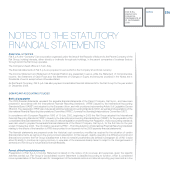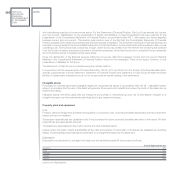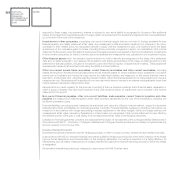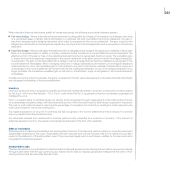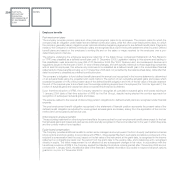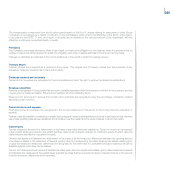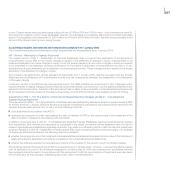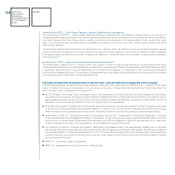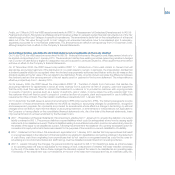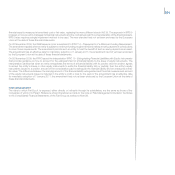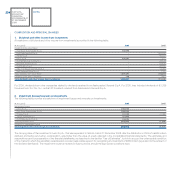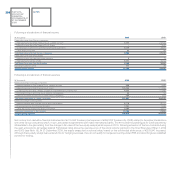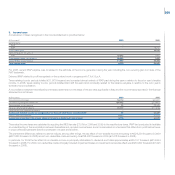Chrysler 2009 Annual Report Download - page 290
Download and view the complete annual report
Please find page 290 of the 2009 Chrysler annual report below. You can navigate through the pages in the report by either clicking on the pages listed below, or by using the keyword search tool below to find specific information within the annual report.
289
Finally, on 12 March 2009 the IASB issued amendments to IFRIC 9 - Reassessment of Embedded Derivatives and to IAS 39 -
Financial Instruments: Recognition and Measurement that allow entities to reclassify certain financial instruments out of the “fair
value through profit or loss” category in specific circumstances. The amendments clarify that on the reclassification of a financial
asset out of the “fair value through profit or loss” category all embedded derivatives have to be assessed and, if necessary,
separately accounted for in the financial statements. The amendments are effective retrospectively from 31 December 2009,
although adoption had no effect on the Company’s financial statements.
Accounting principles, amendments and interpretations not yet applicable and not early adopted
On 31 July 2008, the IASB issued an amendment to IAS 39 - Financial Instruments: Recognition and Measurement which is to
be applied retrospectively from 1 January 2010. The amendment clarifies how existing principles determining whether a hedged
risk or portion of cash flows is eligible for designation should be applied in particular situations. When applied this amendment
will have no effect on the Company’s financial statements.
On 27 November 2008, the IFRIC issued interpretation IFRIC 17 - Distributions of Non-cash Assets to Owners that will
standardise accounting treatment of the distribution of non-cash assets to owners. In particular, the interpretation clarifies that
a dividend payable should be recognised when the dividend is appropriately authorised and that an entity should measure this
dividend payable at the fair value of the net assets to be distributed. Finally, an entity should recognise the difference between
the dividend paid and the carrying amount of the net assets used for payment in the income statement. The interpretation is
effective prospectively from 1 January 2010.
On 29 January 2009, the IFRIC issued the interpretation IFRIC 18 - Transfers of Assets from Customers that clarifies the
accounting treatment for agreements in which an entity receives from a customer an item of property, plant and equipment
that the entity must then use either to connect the customer to a network or to provide the customer with ongoing access
to a supply of goods or services (such as a supply of electricity, gas or water). In some cases, the entity receives cash from
the customer which will then be used to acquire or construct an item of property, plant and equipment for use in fulfilling the
requirements of the contract. The interpretation is effective prospectively from 1 January 2010.
On 16 April 2009, the IASB issued a series of amendments to IFRS (Improvements to IFRS). The following paragraphs provide
a description of those amendments identified by the IASB as resulting in accounting changes for presentation, recognition
and measurement purposes. No comments are provided for amendments whose effect is a change in terminology or editorial
changes which are likely to have minimal effects on accounting treatment, or amendments or interpretations not applicable to
the Company or having effects on the consolidated financial statements only. As of the date of the financial statements, these
improvements had not yet been endorsed by the European Union.
IAS 1 - Presentation of Financial Statements: this amendment, effective from 1 January 2010, amends the definition of a current
liability contained in IAS 1. The previous definition required liabilities which could be extinguished at any time by issuing equity
instruments to be classified as current. That led to liabilities relating to convertible bonds which could be converted at any time into
the shares of the issuer to be classified as current. Following this amendment the existence of a currently exercisable option for
conversion into equity instruments becomes irrelevant for the purposes of the current/non-current classification of a liability.
IAS 7 - Statement of Cash Flows: this amendment, applicable from 1 January 2010, clarifies that only expenditures that result
in a recognised asset in the statement of financial position are eligible for classification as investing activities in the statement
of cash flows; cash flows originating from expenditures that do not result in a recognised asset (as could be the case for
advertising and promotional activities and staff training) must be classified as cash flows from operating activities.
IAS 17 - Leases: following the changes, the general conditions required by IAS 17 for classifying a lease as a finance lease
or an operating lease will also be applicable to the leasing of land, independent of whether the lease transfers ownership
by the end of the lease term. Before these changes the standard required the lease to be classified as an operating lease
if ownership of the leased land was not transferred at the end of the lease term because land has an indefinite useful life.


